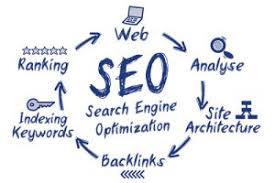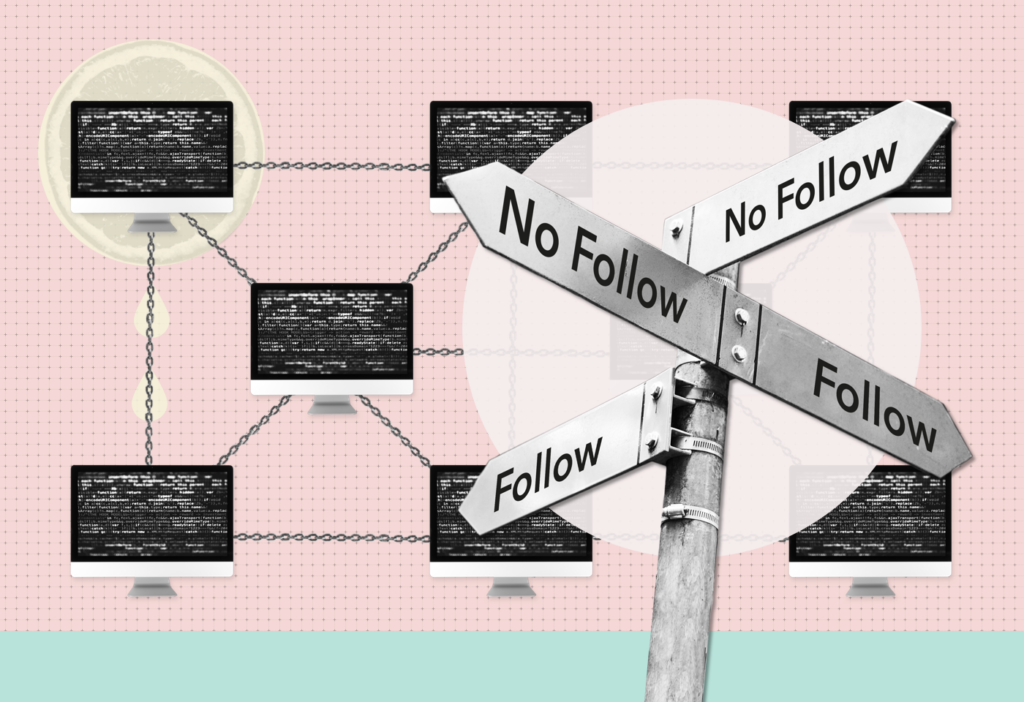SEO is a complicated demon to get you head around. For PRs, the most important thing to know is that links from the coverage you achieve play an important role in determining where a website ranks in the search engines.
Of course, it’s not the only contributing factor to a website’s rank.
There’s also keywords, site architecture, and other things we’re not going to cover in this piece.
On a top-level the SEO process looks like this:

All points on the circle come together to give webpages their ultimate ranking.
This post is going to focus on links — or backlinks as they are referenced in the SEO diagram above
When a page on a website gets a link back from another site, the page gets a little SEO boost — here refers to it as getting a “point”, which is a good way of describing it. The more links you have pointing to a webpage, the more points that webpage has in the eyes of Google.
If a page has a lot of links pointing to it, Google thinks it must be really good (otherwise why would people be linking to it?).
We explain this in more detail in this post.
No follow vs follow links
Now that you’ve got an understanding of how links work in SEO, we can drill into the no-follow vs follow debate.
Essentially, follow links count as “points”.
They push link juice from the linking page to the linked page and help them get a better search ranking. The more reputable the linking site is, the more points the receiving webpage gets (for example, a link from the New York Times is worth a lot more than a link from a much smaller site).
So what’s a no-follow link?
You can add a code to a link which signals to Google not to follow it.
A no-follow link is one that doesn’t count as a “point”. This is also indicated to Google crawlers with a specific code that’s included in the link.
Previously Google didn’t transfer any link juice to pages that are linked to with the no-follow attribute.
This is all getting confusing… Why would you not want Google to follow a link??
Before no-follow links were introduced, the internet was a spammy place filled with dodgy SEOs trying every trick in the book to get more backlinks to their sites.
They posted irrelevant links in forums, comment sections, and anywhere they could to get their hands on just a little bit more link juice.
To counter this, most of the places where SEOs were putting their spammy links started to abide by the no-follow rule. That is, SEOs can comment as much as they like on other sites with links to their webpages, but they won’t count for anything and, therefore, the link juice won’t get passed on.
No-follow links are generally used for:
- Paid links (to eliminate people buying links)
- Comment sections of blogs and forums (to stop people adding spammy comments with a link)
- Anything involving what Google dubs “untrusted content”
This is all very well and good, but some publishers panicked and “no followed” everything.
Take the Daily Mail, for example. If you secure a piece of coverage and the journalist links to your website, the links are always no-follow. This means your website doesn’t get any of the link juice from the publication.
Wait, why are we talking about no-follow links now if they’ve been around for years?
In September, Google announced it was changing the way it crawled follow and no-follow links.
Now, no-follow links will be seen as a “hint” rather than as a directive for ranking purposes. In the past, no-follow links weren’t counted at all by Google, but this might change.
In their official statement, Google said:
“All the link attributes — sponsored, UGC, and nofollow — are treated as hints about which links to consider or exclude within search.
We’ll use these hints — along with other signals — as a way to better understand how to appropriately analyze and use links within our system.”
You might have noticed that there are two new link attributes featured in the statement — sponsored and UGC. These will serve to provide more context about the content that’s being linked to.
Here’s a breakdown of what you’d use the new attributes for:
- Sponsored: when you want to identify links that are part of advertisements or sponsorships (or other paid agreements)
- UGC: to be used in links within user-generated content, like in forums or comments
What does this all mean for me?
The most notable thing in general about Google’s update is that no-follow links will be looked at as “hints” rather than as definitely “no follows”. This means that, if sites are using the no-follow attribute on links, Google may choose to ignore this and pass equity to the linked page anyway.
This is just a possibility, though, as nothing is set in stone yet.
If this is the case, we might start seeing some big shifts in visibility, particularly if Google starts counting links from the likes of Wikipedia or the Daily Mail. Again, it’s not 100% that this will happen, which sites will be impacted, or when it will even happen.
It’s tricky to say what kind of long-term impact this will have on PRs at such an early stage of the change. As it stands, Google has said that there’s no need to change no-follow attributes and start using the sponsored or UGC indicators, and to only update them “when it’s convenient.’’
In the meantime, it actually makes life easier.
If you are quizzed on whether your links are follow or no-follow and whether that changes anything, you now have the knowledge to say “it doesn’t matter!”
Here’s what you can say if you’re asked about the follow status of a link:
Google announced it was changing the way it crawled follow and no-follow links. Now, no-follow links will be seen as a “hint” rather than as a definite “no-follow” for ranking purposes. This means that a link, whether followed or no followed, can still pass on authority
PRs need to keep track of all their links as it has such an impact on SEO. Now that no-follow links provide a ‘hint’ to Google, any link in your coverage should be reported, whether it’s followed or not.
Tracking links in Coverage
Tracking any links you get to your brand through coverage is a pivotal part of a successful PR strategy. CoverageBook helps you to easily report your links — follow or no follow — from coverage.
Links have — and likely always will be — an important part of SEO, and this isn’t going to change with Google’s latest update. In fact, we’ll likely see brands getting more visibility from the publications that cover them and a switch in the way media reports on brands.
